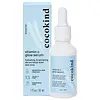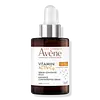What's inside
What's inside
 Key Ingredients
Key Ingredients

 Benefits
Benefits

 Concerns
Concerns

No concerns
 Ingredients Side-by-side
Ingredients Side-by-side

Aloe Barbadensis Leaf Juice
Skin ConditioningWater
Skin ConditioningGlycerin
HumectantPolyglycerin-6
HumectantPentylene Glycol
Skin ConditioningAscorbyl Glucoside
AntioxidantAzelaic Acid
BufferingPropanediol
SolventXanthan Gum
EmulsifyingCaprylyl Glyceryl Ether
CleansingSodium Hydroxide
BufferingSodium Citrate
BufferingBetaine
HumectantCaulerpa Lentillifera Extract
Caprylhydroxamic Acid
Sodium Hyaluronate
HumectantSodium Phytate
Sodium Benzoate
MaskingCitric Acid
BufferingAloe Barbadensis Leaf Juice, Water, Glycerin, Polyglycerin-6, Pentylene Glycol, Ascorbyl Glucoside, Azelaic Acid, Propanediol, Xanthan Gum, Caprylyl Glyceryl Ether, Sodium Hydroxide, Sodium Citrate, Betaine, Caulerpa Lentillifera Extract, Caprylhydroxamic Acid, Sodium Hyaluronate, Sodium Phytate, Sodium Benzoate, Citric Acid
Water
Skin ConditioningGlycerin
HumectantNiacinamide
SmoothingPentylene Glycol
Skin ConditioningC9-12 Alkane
SolventCaprylic/Capric Triglyceride
MaskingPentaerythrityl Tetracaprylate/Tetracaprate
EmollientAscorbyl Glucoside
AntioxidantBakuchiol
Antimicrobial1,2-Hexanediol
Skin ConditioningAcacia Senegal Gum
MaskingButylene Glycol
HumectantCitric Acid
BufferingCoco-Caprylate/Caprate
EmollientParfum
MaskingGlyceryl Behenate
EmollientGlyceryl Dibehenate
EmollientSodium Citrate
BufferingSodium Dilauramidoglutamide Lysine
HumectantSodium Hyaluronate
HumectantSodium Hydroxide
BufferingTocopheryl Glucoside
EmollientTribehenin
EmollientXanthan Gum
EmulsifyingWater, Glycerin, Niacinamide, Pentylene Glycol, C9-12 Alkane, Caprylic/Capric Triglyceride, Pentaerythrityl Tetracaprylate/Tetracaprate, Ascorbyl Glucoside, Bakuchiol, 1,2-Hexanediol, Acacia Senegal Gum, Butylene Glycol, Citric Acid, Coco-Caprylate/Caprate, Parfum, Glyceryl Behenate, Glyceryl Dibehenate, Sodium Citrate, Sodium Dilauramidoglutamide Lysine, Sodium Hyaluronate, Sodium Hydroxide, Tocopheryl Glucoside, Tribehenin, Xanthan Gum
 Reviews
Reviews

Ingredients Explained
These ingredients are found in both products.
Ingredients higher up in an ingredient list are typically present in a larger amount.
Ascorbyl Glucoside is a stable form of Vitamin C. It is created by combining glucose from starch.
When applied to skin, Ascorbyl Glucoside turns into Ascorbic Acid.
Ascorbyl Glucoside is an antioxidant. Antioxidants help fight free-radicals, or molecules that may damage skin cells.
It can help to reduce redness, improve skin texture, reduce the effects of aging, reduce the visibility of dark spots, and brighten skin.
Read more about other types of Vitamin C:
Learn more about Ascorbyl GlucosideCitric Acid is an alpha hydroxy acid (AHA) naturally found in citrus fruits like oranges, lemons, and limes.
Like other AHAs, citric acid can exfoliate skin by breaking down the bonds that hold dead skin cells together. This helps reveal smoother and brighter skin underneath.
However, this exfoliating effect only happens at high concentrations (20%) which can be hard to find in cosmetic products.
Due to this, citric acid is usually included in small amounts as a pH adjuster. This helps keep products slightly more acidic and compatible with skin's natural pH.
In skincare formulas, citric acid can:
While it can provide some skin benefits, research shows lactic acid and glycolic acid are generally more effective and less irritating exfoliants.
Most citric acid used in skincare today is made by fermenting sugars (usually from molasses). This synthetic version is identical to the natural citrus form but easier to stabilize and use in formulations.
Read more about some other popular AHA's here:
Learn more about Citric AcidGlycerin is already naturally found in your skin. It helps moisturize and protect your skin.
A study from 2016 found glycerin to be more effective as a humectant than AHAs and hyaluronic acid.
As a humectant, it helps the skin stay hydrated by pulling moisture to your skin. The low molecular weight of glycerin allows it to pull moisture into the deeper layers of your skin.
Hydrated skin improves your skin barrier; Your skin barrier helps protect against irritants and bacteria.
Glycerin has also been found to have antimicrobial and antiviral properties. Due to these properties, glycerin is often used in wound and burn treatments.
In cosmetics, glycerin is usually derived from plants such as soybean or palm. However, it can also be sourced from animals, such as tallow or animal fat.
This ingredient is organic, colorless, odorless, and non-toxic.
Glycerin is the name for this ingredient in American English. British English uses Glycerol/Glycerine.
Learn more about GlycerinPentylene glycol is typically used within a product to thicken it. It also adds a smooth, soft, and moisturizing feel to the product. It is naturally found in plants such as sugar beets.
The hydrophilic trait of Pentylene Glycol makes it a humectant. As a humectant, Pentylene Glycol helps draw moisture from the air to your skin. This can help keep your skin hydrated.
This property also makes Pentylene Glycol a great texture enhancer. It can also help thicken or stabilize a product.
Pentylene Glycol also acts as a mild preservative and helps to keep a product microbe-free.
Some people may experience mild eye and skin irritation from Pentylene Glycol. We always recommend speaking with a professional about using this ingredient in your routine.
Pentylene Glycol has a low molecular weight and is part of the 1,2-glycol family.
Learn more about Pentylene GlycolSodium Citrate is the sodium salts of citric acid. In skincare, it is used to alter pH levels and acts as a preservative.
Its main functions are to maintain the pH of a product and neutralize metal ions.
The acidity of our skin is maintained by our glands and skin biome; normal pH level of skin is slightly acidic (~4.75-5.5).
Being slightly acidic allows our skin to create an "acid mantle". This acid mantle is a thin barrier that protects our skin from bacteria and contaminants.
Learn more about Sodium CitrateSodium Hyaluronate is hyaluronic acid's salt form. It is commonly derived from the sodium salt of hyaluronic acid.
Like hyaluronic acid, it is great at holding water and acts as a humectant. This makes it a great skin hydrating ingredient.
Sodium Hyaluronate is naturally occurring in our bodies and is mostly found in eye fluid and joints.
These are some other common types of Hyaluronic Acid:
Learn more about Sodium HyaluronateSodium Hydroxide is also known as lye or caustic soda. It is used to adjust the pH of products; many ingredients require a specific pH to be effective.
In small amounts, sodium hydroxide is considered safe to use. However, large amounts may cause chemical burns due to its high alkaline.
Your skin has a natural pH and acid mantle. This acid mantle helps prevent harmful bacteria from breaking through. The acid mantle also helps keep your skin hydrated.
"Alkaline" refers to a high pH level. A low pH level would be considered acidic.
Learn more about Sodium HydroxideWater. It's the most common cosmetic ingredient of all. You'll usually see it at the top of ingredient lists, meaning that it makes up the largest part of the product.
So why is it so popular? Water most often acts as a solvent - this means that it helps dissolve other ingredients into the formulation.
You'll also recognize water as that liquid we all need to stay alive. If you see this, drink a glass of water. Stay hydrated!
Learn more about WaterXanthan gum is used as a stabilizer and thickener within cosmetic products. It helps give products a sticky, thick feeling - preventing them from being too runny.
On the technical side of things, xanthan gum is a polysaccharide - a combination consisting of multiple sugar molecules bonded together.
Xanthan gum is a pretty common and great ingredient. It is a natural, non-toxic, non-irritating ingredient that is also commonly used in food products.
Learn more about Xanthan Gum